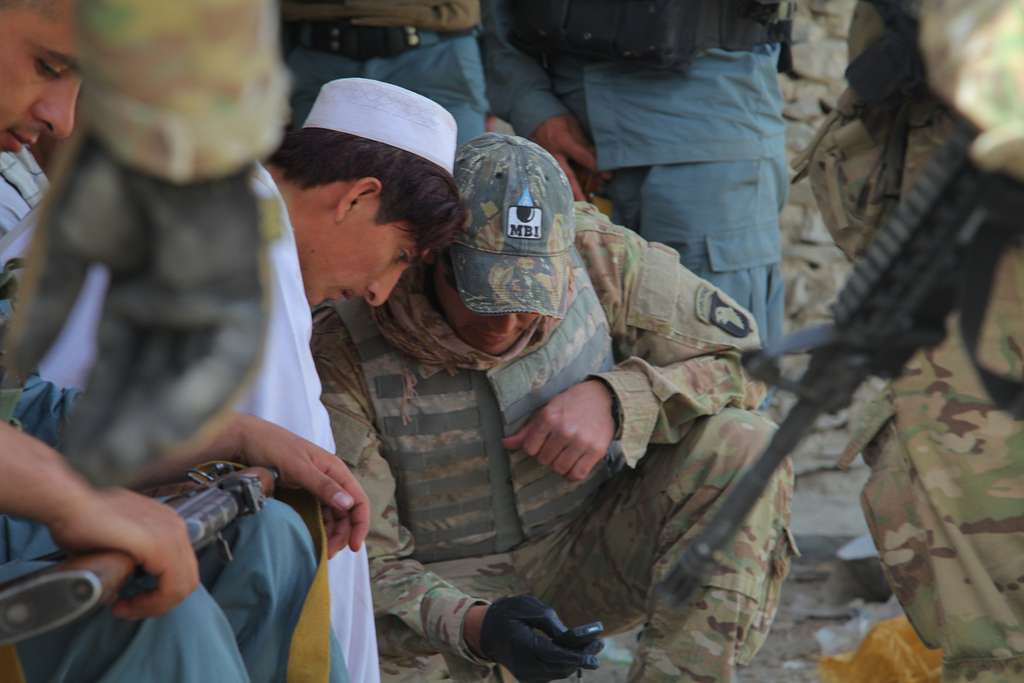Senator Kaine's ISIS AUMF
Published by The Lawfare Institute
in Cooperation With

1. No U.S. ground troops; 2. Repeal of the 2002 Iraq Authorization for Use of Military Force; 3. Sunset after one year; 4. Narrow definition of "associated forces."Despite the general withholding of authorization for ground troops, it appears that the Senator's proposal nevertheless would allow for limited, on-the-ground U.S. combat operations beyond training and arming Kurdish, Iraqi, and rebel forces. A key provision explains that the bill includes no "(1) authorization for the use of United States ground combat forces, except for the purposes set forth in subsection (a)(2) [regarding training and arming the Kurds, Iraqis, and/or rebels] or as necessary for the protection or rescue of members of the United States Armed Forces or United States citizens from imminent danger posed by ISIL, or for limited operations against high value targets." (Emphasis added.) The full text of Senator Kaine's AUMF is below:
To authorize the use of United States Armed Forces against the Islamic State in Iraq and the Levant:
Whereas that the Islamic State in Iraq and the Levant (ISIL), also known as ISIS or the Islamic State, is a terrorist organization committing daily acts of barbarity currently encompassing large portions of Syria and Iraq, and is a serious threat to the United States and the international community;
Whereas ISIL’s violence is destructive of religious freedom, the equality of women, protections against genocide, principles of national sovereignty, freedom of expression, and other core human rights protected by international law;
Whereas ISIL’s grisly execution of United States hostages, recruitment of United States citizens and others to serve as foreign fighters that threaten to return to the United States and other nations, and pledges to carry out additional acts of violence directly against the United States make it a threat of growing significance to the United States; and
Whereas United Nations Security Council Resolutions 2169 (2014) and 2170 (2014) note that ISIL’s advancement is a major threat to Iraq’s future, condemn attacks by ISIL, reiterate international community support for Iraq’s security and territorial integrity, and emphasize the need for the international community to work together to help stabilize Iraq and combat ISIL: Now therefore be it
Resolved by the Senate and House of Representatives of the United States of America in Congress assembled,
SECTION 1. SHORT TITLE.
This joint resolution may be cited as the “Authorization for Use of Military Force against the Islamic State in Iraq and the Levant”.
SEC. 2. AUTHORIZATION FOR USE OF UNITED STATES ARMED FORCES AGAINST THE ISLAMIC STATE IN IRAQ AND THE LEVANT.
(a) In General.—In order to protect the United States and other countries from terrorist attacks by the Islamic State in Iraq and the Levant (ISIL), and in order to protect individuals from acts of violence in clear contravention of international law and basic human rights, the President is authorized, as part of a multinational coalition, subject to the limitations in subsection (b)—
(1) to use all necessary and appropriate force to participate in a campaign of airstrikes in Iraq, and if the President deems necessary, in Syria, to degrade and defeat ISIL; and
(2) to provide military equipment and training to forces fighting ISIL in Iraq or Syria, including the Iraqi security forces, Kurdish fighters, and other legitimate, appropriately vetted, non-terrorist opposition groups in Syria.
(b) No Authorization for Use of Ground Forces or Force Against Associated Forces.—The authorization in this section does not include—
(1) authorization for the use of United States ground combat forces, except for the purposes set forth in subsection (a)(2) or as necessary for the protection or rescue of members of the United States Armed Forces or United States citizens from imminent danger posed by ISIL, or for limited operations against high value targets; or
(2) authorization for the use of force against forces associated with ISIL, unless such forces are identified in a report submitted under section 4 as individuals or organizations that are immediately and directly fighting alongside ISIL in Iraq and Syria.
(c) Expiration.—The authorization in this section shall expire on the date that is one year after the date of the enactment of this joint resolution.
(d) War Powers Resolution Requirements.—
(1) Specific statutory authorization.—Consistent with section 8(a)(1) of the War Powers Resolution, the Congress declares that this section is intended to constitute specific statutory authorization within the meaning of section 5(b) of the War Powers Resolution.
(2) Applicability of other requirements.—Nothing in this resolution supercedes any requirement of the War Powers Resolution.
SEC. 3. REPEAL OF PRIOR AUTHORIZATION FOR USE OF UNITED STATES ARMED FORCES AGAINST IRAQ.
The Authorization for the Use of Military Force Against Iraq Resolution of 2002 (Public Law 107–243; 50 U.S.C. 1541 note) is hereby repealed.
SEC. 4. DESIGNATION OF ORGANIZATIONS AND INDIVIDUALS IMMEDIATELY AND DIRECTLY FIGHTING ALONGSIDE ISIL.
Not later than 90 days after the date of the enactment of this resolution, and every 90 days thereafter, the President shall submit to Congress a list of those organizations or individuals immediately and directly fighting alongside ISIL for purposes of actions taken pursuant to this joint resolution. The list shall be maintained in unclassified form but may contain a classified annex.
SEC. 5. REPORTS.
The President shall report to Congress every 90 days after enactment of this resolution regarding the progress of the effort against ISIL.
SEC. 6. RULES OF CONSTRUCTION.
Nothing in this resolution shall be construed as—
(1) authorizing support for force in support of, or in cooperation with, the national government of Syria that was in power as of the date of the enactment of this resolution, or its security services; or
(2) limiting the constitutional or statutory powers of the President or Congress, or any additional powers held by the United States pursuant to international law or treaty.
At the moment, five other AUMF's have been introduced to authorize force against ISIL. Lawfare covered them here and here.





